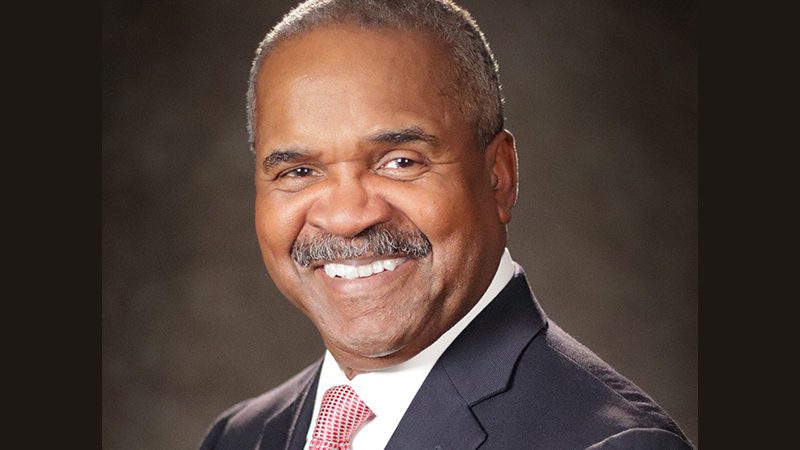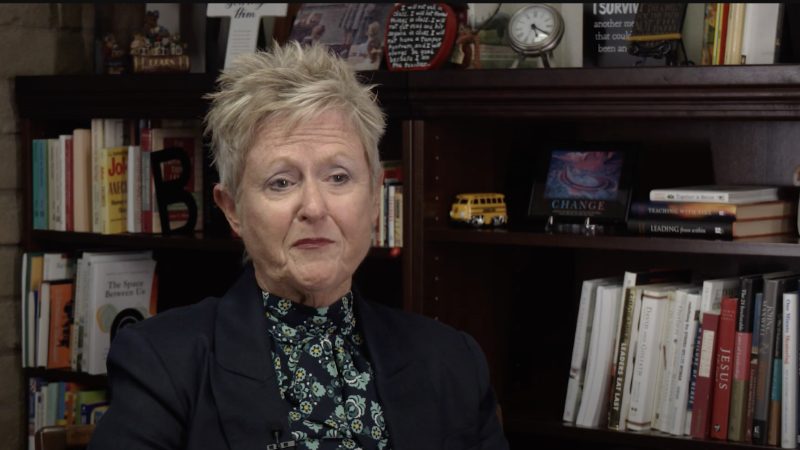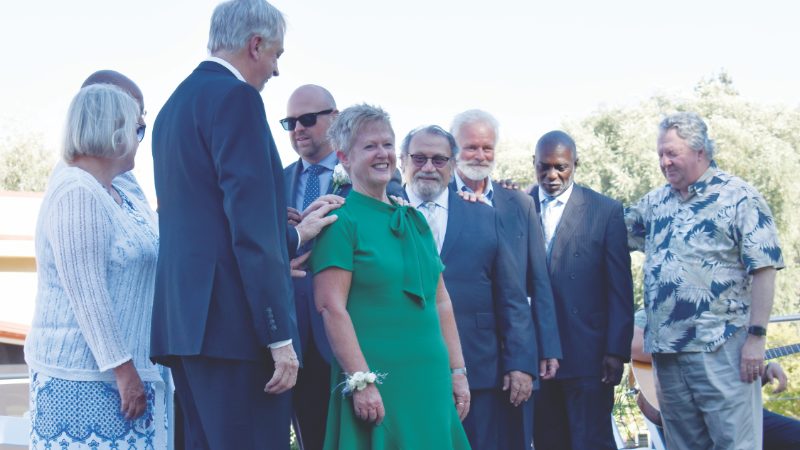Editor’s Note: Part 1 appeared in the September 2022 and Part 2 in the December 2022 issues of the Recorder.
In 1943, a turning point came in the intersection between race, gender, and the Adventist Church. Lucille Byard (1877-1943), a Black Adventist laywoman, went to a prominent Adventist hospital in Maryland in hopes of lifesaving treatment but was denied care because of her race and the unjust Jim Crow laws then in effect.i Refused even the dignity of an ambulance, her husband arranged for a taxi to transport her to a Black hospital in Washington, D.C., where she later died.ii
The Church has attempted to atone for Byard’s treatment (or lack thereof), but it was not unique among white-led Adventist health institutions of the 1940s.iii It was rightly met with outrage in the Black Adventist community, as it compounded other injustices Black brethren and their families were enduring—from not being served in denominational cafeterias or allowed to use the same bathrooms as their white counterparts, to segregation in Adventist schools and Black students being denied admission to Adventist colleges in the North.
The racial injustices in the interwar period of the 1920s and 30s led Black Adventist leaders to demand greater autonomy in the management of their institutions, resources, and tithe offerings.iv There were many other injustices Black Adventists endured in the years after Ellen White’s death, as the civil rights movement gained momentum and before changes in denominational policy improved the treatment of African Americans and desegregated church institutions.v
Black Adventist women were at the forefront of efforts to ameliorate these circumstances. A key example is Dr. Eva Beatrice Dykes (1893-1986), the first Black woman in America to complete the requirements for a Ph.D. (Radcliffe, 1921), who was instrumental in proposing changes to church policy to align with biblical values. In 1944, she and seven other prominent Black Adventist scholars formed the Committee for the Advancement of World-wide Work among Colored Seventh-day Adventists.vi
After extensive deliberations and “heroic efforts,” this Committee issued an eight-page missive showing the many discriminatory and “un-Christlike” policies that Black youth, students, and church workers faced in the educational and medical programs at Adventist institutions in northern U.S. states, as well as in the administrative sphere, employment practices, and lack of spiritual outreach to Black constituencies in the South.
Describing the granddaughter of slaves who worked in cotton fields, Dyke’s biography notes, “She stood with humble dignity, representing not one but two minority groups. Black women in America have always faced the double obstacles of gender and race to achieve their dreams and aspirations.” In 1975, the General Conference aptly presented Dykes with a Citation of Excellence for her outstanding contributions to Adventist education.vii
Other Black women joined Dykes in laboring for greater equity as the Adventist Church moved into the second half of the 20th century. Dr. Valarie Justiss Vance (1913-2015), the second Black Adventist woman to receive a Ph.D. (Ohio State University, 1949), served as the Committee’s secretary. Vance would later teach social work as an assistant professor at the University of California and serve on the Loma Linda University board.viii Dykes and Vance were joined on the Committee by public school teacher Helen R. Sugland and Sabbath School teacher Myrtle G. Murphy, which notably balanced the group with four women and four men.
This group’s advocacy following the pernicious denial of medical treatment for Lucille Byard led to three regional (then called “colored”) conferences being established in 1944, which had long been sought as a last resort to improve the treatment of Black Adventists in light of the intransigence of segregationist whites in America.
Black Adventist women have worked in formal and informal ministerial capacities to advance the gospel since long before the civil rights and women’s rights movements of the mid-20th century.
By 1945, after regional conferences were created, Black Adventists numbered over 19,000 people and comprised about eight percent of NAD membership, contributing significant amounts of tithe and offering revenues ($1,372,500 in 1945, or over $22 million in 2022 dollars when adjusted for inflation).ix By 1990, the number grew to more than 200,000 and represented more than a quarter of Adventists in North America.x As of 2020, Black membership has again doubled in size (400,000) and now reflects more than a third of NAD.xi
Black Adventist women have worked in formal and informal ministerial capacities to advance the gospel since long before the civil rights and women’s rights movements of the mid-20th century. We find role models of Adventist women who influenced these movements not only in the life of Sojourner Truth and Rosetta Douglass-Sprague but also the educational advocate and grassroots activist Louise Little and the civil rights pioneer Irene Morgan.
Like Anna Knight, Lois Raymond was another Black single woman who served as a missionary for the Adventist Church. Born in Louisiana, she converted to Adventism in Los Angeles, Calif., and graduated with a teaching degree from La Sierra College in 1949. She served over 33 years in denominational service, including more than a decade teaching as a licensed Bible instructor in the Pacific Union and two decades as a credentialed missionary teacher in West Africa (Liberia, Sierra Leone, and Ghana), before retiring in 1982.xii
In addition to Knight and Raymond, the Black SDA History project (BlackSDAHistory.org) and the Encyclopedia of Seventh-day Adventists (encyclopedia.adventist.org) profile other notable Black Adventist women who worked tirelessly to advance the gospel, including:
- Maud Elizabeth Brown Strachan (1874-1936), a nurse, educator, and literature evangelist who worked with her husband, Matthew Strachan, in a ministry of 37 years;
- Celia Marie Abney Cleveland (1921-2003), the daughter of early Adventist missionaries of color, who served as a Bible instructor and musician and who partnered with her husband E.E. Cleveland to lead more than 4,000 people to join the Adventist church;xiii
- Amelia Christian Baker (1931-2012), a longtime Bible worker and one of the first women ordained as an elder in California; and
- Margaret Nelda Norman Williams (1938-2015), an educator and missionary to Lubumbashi in the Democratic Republic of the Congo and Kinshasa in Zaire.
Each of these women broke the “stained glass ceiling,” or barriers to advancement in gospel ministry and within Christian communities, notwithstanding their respective credentials or formal employment status.xiv
Other women advanced the gospel through their efforts in youth mobilization and social services. For example, Chessie Harris (1906-1997) supported orphans, unhoused, and marginalized youth throughout her life and received licensing in 1954 for providing childcare and shelter services to children in Madison County, Alabama. She earned numerous accolades for her work, including the President's Volunteer Action Award from George H.W. Bush in 1989. Similarly, Trula Elizabeth Wade (1898-1995), herself adopted by Adventists as a child, became a teacher and served generations of youth in Adventist higher education settings.
Singing and music factor significantly in the Black experience, as Alma Montgomery Blackmon (1921-2009) explained to her colleagues on the committee that produced the 1985 SDA Hymnal. A musician, educator, and humanitarian who directed the Oakwood Aeolians for more than a decade, Blackmon said, “From our slave forefathers we did not inherit houses and lands, for they did not have them to give. However, they gave us a rich heritage of music, a great body of spirituals, which for many years was handed down by oral tradition.”xv
Like Dykes and Blackmon, internationally renowned lyric soprano Alyne Dumas Lee (1903-1970) began ministering through music at an early age and led the Aeolians with distinction, ministering through music around the world; Mary Inez Booth (1913-2010) studied music at Pacific Union College and went on to teach music as well as leading a weekly prison ministry in Alabama for 54 years; Eleanor A. Crews Wright (1926-1992) was a prolific gospel music writer, singer, pianist, and arranger; and Joni Mae Pierre-Louis (1927-2009) was a musician and educator who served alongside her husband in Haiti as well as Oakland, California.
Fast forward to 1995, in what many called “the Year of the Woman” because of the historic firsts for women in American politics as well as in the Adventist Church, when local churches began ordaining women following the G.C. Session in Utrecht, the Netherlands. That year, Hyveth Williams became senior pastor of Campus Hill church in Loma Linda, Calif. Serving in that role until 2005, she was the first woman—and the first Black woman—to serve as senior pastor of a large church within the denomination.xvi
_____________________________
Sasha Ross served as director of the La Sierra University Women’s Resource Center from 2013–2016. She lives in Riverside, California, with her husband, Harold Thomas, and their daughter, Madeleine.
i. Calvin B. Rock, “The Lucille Byard Affair: When Customs and Law Trumped Compassion,” Adventist Review (August 1, 2019). Online at https://adventistreview.org/magazine-article/the-lucille-byard-affair. Reprinted from Rock’s Protest and Progress: Black Seventh-day Adventist Leadership and the Push for Parity (Berrien Springs, MI: Andrews University Press, 2018), pp. 42-45.
ii. Benjamin Baker, “Death by Wasting Away: The Life, Last Days, and Legacy of Lucy Byard,” Journal of Black Studies 51, no. 5 (July 2020), pp. 391-410.
iii. “A Conversation on Racism and Adventism within NAD Leadership,” featuring Daniel Jackson, Alex Bryant, and Randy Robinson with Mylon Medley, moderator (June 18, 2020). Online at https://www.nadadventist.org/news/conversation-racism-and-adventism-nad-leadership.
iv. Samuel G. London, Jr., Seventh-day Adventists and the Civil Rights Movement (Jackson: University Press of Mississippi, 2009), pp. 97-98.
v. For the story of how Adventist schools in the United States were forced to integrate by the government and U.S. Attorney General Nicholas Katzenbach in 1965, see London, pp. 124-125. For the story of difficulties faced by Black Adventist students involved in the integration of white Adventist colleges and universities, see Michael Campbell’s “Adventists, Fundamentalism, and the Second Wave of the Ku Klux Klan,” Spectrum Magazine 50, no.1 (April 26, 2022). Online at https://spectrummagazine.org/news/2022/adventists-fundamentalism-and-second-wave-ku-klux-klan.
vi. Rock, Protest and Progress, p. 255 (Appendix 11).
vii. DeWitt S. Williams, She Fulfilled the Impossible Dream: The Story of Eva B. Dykes (Hagerstown, MD: Review and Herald Pub. Assn., 1985), pp. 9-10; 65-67. Dyke’s 1921 graduation from Radcliffe College, now part of Harvard University, was the basis for her 15-year career on the faculty of Howard University and, later, as chair of the English Department at Oakwood until her retirement in 1975. Her presence helped secure accreditation for Oakwood. She was an accomplished singer who organized the now-famous Aeolians chorale in 1946; she was also instrumental in establishing Pine Forge Academy in 1946, which made Adventist education more accessible to Black youth.
viii. “Valarie Justiss Vance: Biography,” published by the HistoryMakers non-profit oral history project (recorded April 22, 2004). Online at https://www.thehistorymakers.org/biography/valarie-justiss-vance-38. Vance was a broadcaster and organizer in addition to her work as educator and social worker.
ix. General Conference Archives, “Statistics of the Colored Department.” Online at https://documents.adventistarchives.org/Resources/RegionalConf/RCO-01.pdf.
x. Benjamin Baker, “The Dynamics of Communication and African-American progress in the SDA organization: A historical descriptive analysis” (Ph.D. dissertation, Howard University, 1994), p. v.
xi. Benjamin Baker, “Did You Know?” timeline in “Social Justice in the Word of God: 2022 Black History Month Bible Study Guide,” printed by the Office of Regional Conference Ministries (Lincoln, NE: AdventSource, 2021), p. 22.
xii. Unnamed author, North American Informant, 14, no. 77 (1960) and 16, no. 85 (1962); see also 1952, 1957, and 1969 SDA Yearbooks. The G.C. minutes for August 1982 and May 1983 document Lois Raymond’s permanent return, recognition for service, and retirement benefits in the G.C. Archives. Online at www.adventistarchives.org.
xiii. See also Carol Hammond, Precious Memories of Missionaries of Color: A Compilation of Stories and Experiences of Ambassadors for God (Calhoun, GA: Teach Services, Inc., 2019), pp. 24-26.
xiv. Cyrus Schleifer and Amy D. Miller, “Occupational Gender Inequality Among American Clergy, 1976–2016: Revisiting the Stained-Glass Ceiling,” Sociology of Religion 78, no. 4 (2017), p. 388.
xv. Quotation included in the online Black SDA History project compiled by Benjamin Baker. Online at https://www.blacksdahistory.org/quotes?lightbox=dataItem-klaxor252. See also Lela Gooding’s profile, “Blackmon, Alma Montgomery (1921-2009),” in the updated and digitized Encyclopedia of Seventh-day Adventists (published Jan. 29, 2022). Online at https://encyclopedia.adventist.org/article?id=CFVJ.
xvi. Redlands Daily Facts, “Loma Linda Pastor Leaving for Teaching Position” (Nov. 18, 2009).
Bible Verses Supporting Women Clergy and Diversity in Leadership
So God created humans in his image, in the image of God he created them; male and female he created them. ~Genesis 1:27
Praise the Lord, all you nations! Extol him, all you peoples! ~Psalms 117:1
Then afterward I will pour out my spirit on all flesh; your sons and your daughters shall prophesy, your old men shall dream dreams, and your young men shall see visions. Even on the male and female slaves, in those days I will pour out my spirit. ~Joel 2:28-29
For as in one body we have many members and not all the members have the same function, so we, who are many, are one body in Christ, and individually we are members one of another. We have gifts that differ according to the grace given to us: prophecy, in proportion to faith; ministry, in ministering; the teacher, in teaching; the encourager, in encouragement; the giver, in sincerity; the leader, in diligence; the compassionate, in cheerfulness. ~Romans 12:4-8
Let us therefore no longer pass judgment on one another, but resolve instead never to put a stumbling block or hindrance in the way of a brother or sister. ~Romans 14:13
There is no longer Jew or Greek; there is no longer slave or free; there is no longer male and female, for all of you are one in Christ Jesus. ~Galatians 3:28
After this I looked, and there was a great multitude that no one could count, from every nation, from all tribes and peoples and languages, standing before the throne and before the Lamb, robed in white, with palm branches in their hands. They cried out in a loud voice, saying, “Salvation belongs to our God who is seated on the throne and to the Lamb!” ~Revelation 7:9-10
* All Scripture quotations are from the New Revised Standard Version Updated Edition (NRSVUE)





